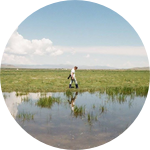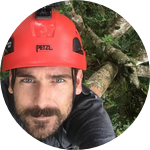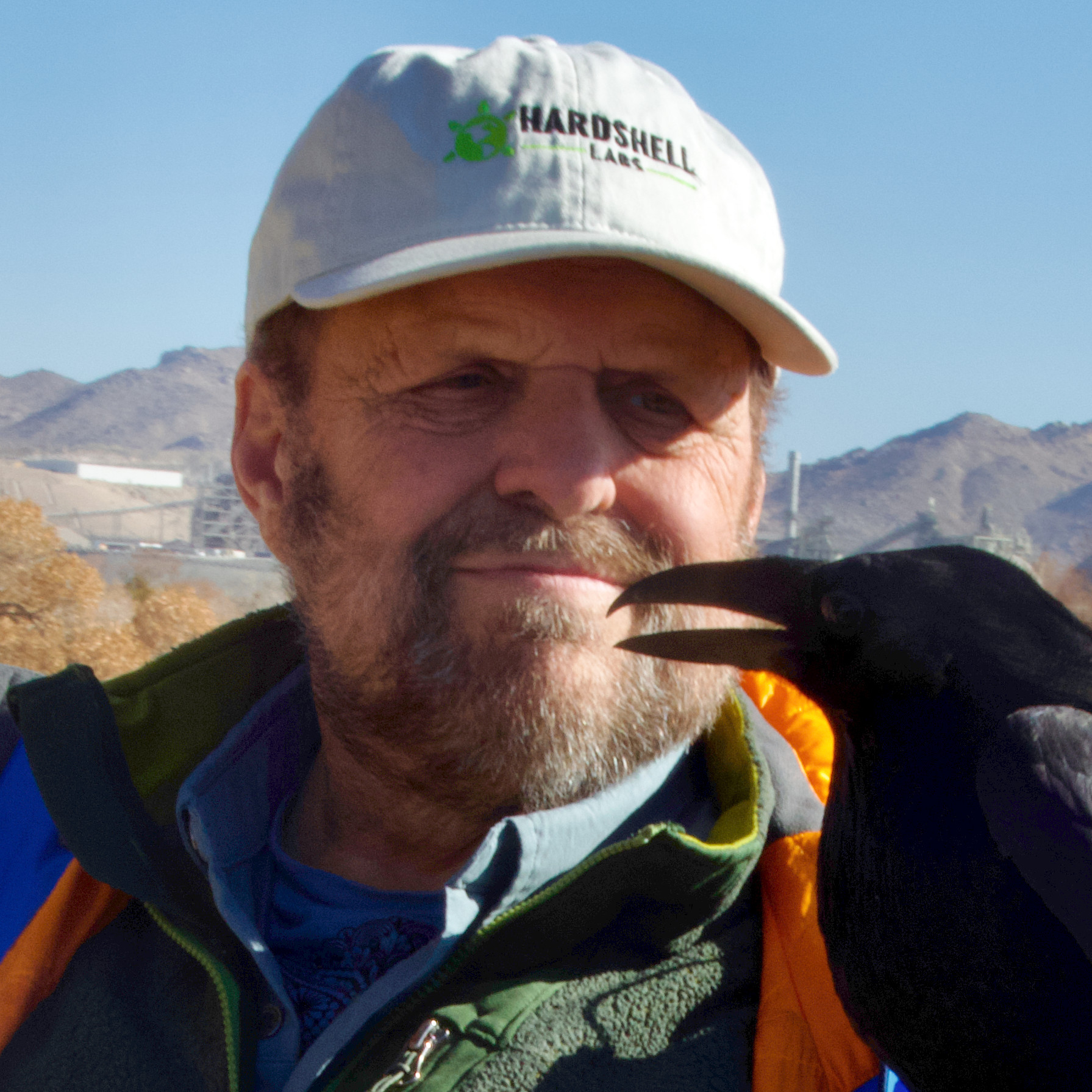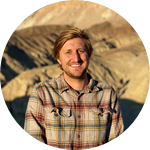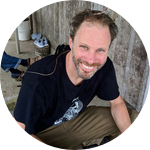About This Project
Sometimes extinction isn’t forever, it just takes the right team to discover what others could not. The Biodiversity Group (TBG) has a proven track record of discoveries and their next target is hidden somewhere in the North Molucca Islands, Indonesia. We propose to collect and process terrestrial eDNA along with their team to enhance their efforts to rediscover Zug’s monitor lizard—which represents the first time eDNA will be used in this manner.
Ask the Scientists
Join The DiscussionWhat is the context of this research?
We are collaborating with the Indonesian Institute of Sciences find, observe, and catch Zug’s monitors on Halmahera and nearby islands in Indonesia, but with several exciting innovations including canopy-safe aerial drones, thermal cameras, smart pipe traps, enhanced arboreal trail cameras, and minute low-powered tracking devices. TBG will also deploy the world’s first portable 3D scanning system so we no longer need to kill specimens.
The proposed addition will develop drone-based air filters and swabbers to obtain eDNA from the air, branches, and water puddles trapped by epiphytic plants. ConservationX Lab’s NABIT™, a handheld reader, will analyze eDNA while in the jungle with probes made by Smithsonian Institute. This real-time data will greatly improve our search efforts!
What is the significance of this project?
A species cannot be protected if we don’t know if and where it lives. Zug’s monitor was first described in 2005 from a single museum specimen collected on Halmahera Island, Indonesia, in 1980, and has not been seen since. Little is known about the lizard. Our expedition will be a key step for Indonesian land managers to protect the species. For the first time ever, instead of euthanizing the specimen we will capture a 3D scan, take a noninvasive DNA sample, place a tracker on the individual, and release it back into the wild.
With your help, we will collect and process terrestrial eDNA in the field for the first time, thereby saving time, money, and maximizing the team’s search time and efficiency. If successful, this would dramatically change how future expeditions are undertaken.
What are the goals of the project?
The goals of this proposal augment the existing expedition:
1. Obtain eDNA samples with new eDNA collectors and see if they capture the lizard’s DNA. The DNA will document the existence of an extant population.
2. Demonstrate the value of a multi-faceted expedition by testing and validating that eDNA is a potentially game-changing approach to find new and lost species.
3. Generate a 3D digital model of the lizard. Freed, for the first time ever, of having to euthanize a live animal for a museum specimen, we will instead learn about the genetics, behavior and ecology of this mysterious species. Absolutely everything we find out will be new. Instead of killing it, we plan to attach a new type of GPS tracker to a live specimen to gain insights into their ecology.
Budget
The funds will be used for consumable and lab technician time to sequence the DNA and develop the genetic probes, deploy the eDNA collector systems, and process DNA collected. The swabs of skin tissue obtained from the museum specimen will need amplifing and sequencing and probes created for use of the NABIT™ Barcode device. There are no existing collectors for aerial or arboreal drone-based eDNA. The HSL engineers will create and test the collectors and devices for securely mounting them to drones. The field costs for most of the expedition will be covered with funds obtained from Re:Wild and other granting sources. Funds from the current campaign will cover the additional local personnel (Indonesian law requires that several local biologists accompany and be paid for by all expeditions), field, and travel costs associated with the eDNA collection (e.g., food, local porters and guides, trapping supplies, travel costs and field vehicle rental, and camping and lodging costs).
Endorsed by
 Project Timeline
Project Timeline
In Feb 2023, Smithsonian Institute will obtain and sequence DNA from the one museum specimen. In spring, ConservationX Labs and Smithsonian Institute will make barcode probes for ConservationX Lab's NABIT™ barcode reader. Hardshell Labs will develop and test the atmospheric and arboreal eDNA collectors stateside. The expedition will occur in Sept. and Oct. We will then analyze the data, write a report and manuscript about our quest, and prepare presentations and articles for the public.
Jan 11, 2023
Project Launched
Jan 15, 2023
Obtain and amplify DNA
Mar 01, 2023
Develop and test barcoding probe
Apr 01, 2023
Design and build eDNA collecting equipment
Jul 01, 2023
Field test eDNA equipment in California
Meet the Team
Affiliates
Team Bio
Our team is passionate about focusing on life overlooked and our field team has expert wildlife biologists, conservation technologists, and local knowledge for our quest to rediscover Zug’s monitor. The Biodiversity Group conducts tropical species discovery expeditions and have found many new and lost species. Winner of the USFWS Genius Prize, Hardshell Labs is field-based and specializes in developing novel conservation tools using emerging technologies like lasers, drones, 3D printing, and AI.
William I. Boarman, Ph.D.
I am excited to join contribute to the development of innovative technology to aid in the search for Zug's monitor and to join the team in the field. As someone who values the use of science in conservation, I believe that the use of environmental DNA (eDNA) can be a powerful tool in species conservation.
With a Ph.D. in Ecology from Rutgers University and over 40 years of experience in the field, I have a strong background in practical wildlife research and conservation biology. As the founder and owner of Conservation Science Research & Consulting, and a former research wildlife scientist with the U.S. Geological Survey and Bureau of Land Management, I have published numerous peer-reviewed papers and technical reports. My areas of expertise include desert tortoise conservation and ecology, common raven biology and management, and terrestrial vertebrate ecology.
In my current role as Chief Science Officer at Hardshell Labs, Inc., I am working on a variety of projects using emerging technologies to support wildlife conservation and resource management. These include the use of remote-fired hyperspectral lasers to haze predators and nuisance birds, aerial drones for oiling bird eggs, and 3-D printing of tortoise shells for training ravens to stop feeding on tortoises. We are also exploring the use of automated ground-based rovers for surveying wildlife and habitats in challenging environments and using artificial intelligence to deter avian pests from impacting endangered species and other valuable resources.
Ryan Boarman
Wildlife Biologist and Conservation Technology Technician, Hardshell Labs, Inc. Development and field deployment of technological devices as well as traditional methods of searching, trapping, and studying. Conduct sampling and processing of eDNA.
Scott Trageser
From catching butterflies by age 2 to discovering new species by age 22, Scott has found his calling as a conservationist, researcher, and award-winning photographer. He has dedicated his life to protecting species overlooked by others by serving as the Executive Director and Board Chair for The Biodiversity Group, a non-profit organization that focuses on protecting overlooked species and providing fiscal sponsorship services to non-profits worldwide. He previously co-founded and served as Director for the Creative Conservation Alliance, a non-profit organization that strives to save the last wild spaces of Bangladesh. Dedicated to the preservation of the natural world and an avid adventurer, his work takes him to wherever threatened species are being overlooked.
Ross Maynard
Ross Maynard is a researcher and photographer for The Biodiversity Group in Tucson, Arizona, USA, and serves as Director of their Biodiversity Research Program in Ecuador. Ross obtained a B.S. in Zoology from North Carolina State University and an M.Sc. in Biology from Stephen F. Austin State University. Ross has been working on various projects in Ecuador since 2007, with his research centering on the conservation, ecology, and diversity of amphibian and reptile assemblages. He also serves as a contributor to the IUCN SSC Amphibian Specialist Group.
Additional Information
Please note, the expedition’s base costs have been partially covered by a grant from Re:Wild and additional grants have been sought but are not yet secured. The project proposed here is specifically for collector development, collection, and analysis of eDNA, which has not been funded by other entities and probably won’t happen without your support.
Our Indonesian collaborators are integral members (Co-PI) of our team. Students and research associates will accompany our team in the field and will conduct genetic analyses and exchange skills and knowledge. After our six-week field expedition, the search for Zug’s monitor will continue. The US team will set up the monitoring equipment in the field and train the Indonesian team on the methods necessary to maintain and capture vital data. They will carry on with local public outreach efforts and work with management agencies to ensure that the lizards, if found, are protected.
We will be operating under the appropriate research permits which are currently being filed. All members of the United States team will obtain Indonesian research visas and we will obtain appropriate ethical approval for the project design if we are able to place telemetry devices on the lizards and use drones.
Project Backers
- 49Backers
- 100%Funded
- $10,500Total Donations
- $214.29Average Donation

